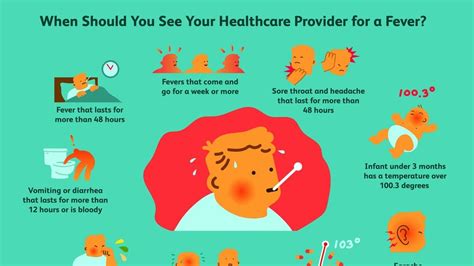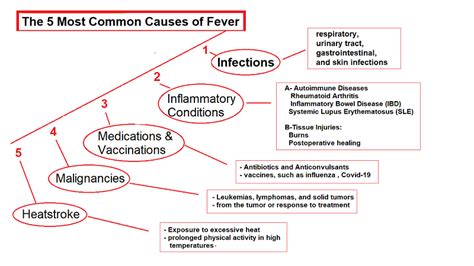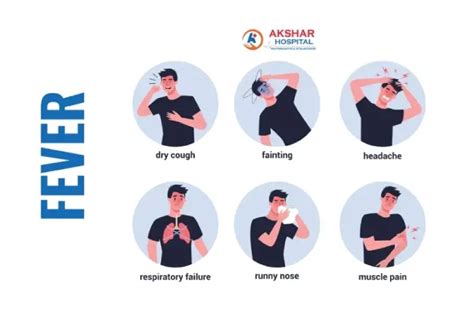Intro
Having a fever can be a concerning and uncomfortable experience, especially when it reaches a high temperature like 101 degrees. Fevers are a common symptom of various illnesses, and in most cases, they are not a cause for alarm. However, it's essential to understand the implications of a 101 fever and when to seek medical attention. In this article, we'll delve into the world of fevers, exploring their causes, symptoms, and treatment options, as well as providing guidance on when to consult a healthcare professional.
A fever is a natural response of the body's immune system to an infection or inflammation. When the body detects the presence of a foreign substance, such as a virus or bacteria, it releases chemicals that trigger a rise in body temperature. This increased temperature helps to create an environment that is less conducive to the growth and multiplication of the invading microorganisms. In most cases, a fever is a self-limiting condition, meaning it will resolve on its own once the underlying infection has been cleared.
However, a 101 fever can be a cause for concern, especially in certain individuals, such as the elderly, young children, and people with compromised immune systems. A high fever can lead to dehydration, which can exacerbate the underlying condition and increase the risk of complications. Additionally, a fever can be a symptom of a more serious underlying condition, such as pneumonia, meningitis, or sepsis, which require prompt medical attention.
Understanding Fevers

To better understand fevers, it's essential to recognize the different types of fevers and their characteristics. There are several types of fevers, including:
- Low-grade fever: A temperature between 100.4°F and 102.2°F (38°C to 39°C)
- Moderate fever: A temperature between 102.2°F and 104°F (39°C to 40°C)
- High fever: A temperature above 104°F (40°C)
- Recurring fever: A fever that recurs at regular intervals, often accompanied by other symptoms such as chills and sweating
Each type of fever has its unique characteristics, and understanding these differences can help individuals and healthcare professionals diagnose and treat the underlying condition more effectively.
Causes of Fevers

Fevers can be caused by a wide range of factors, including:
- Viral infections, such as the common cold, flu, and mononucleosis
- Bacterial infections, such as pneumonia, tuberculosis, and meningitis
- Parasitic infections, such as malaria and toxoplasmosis
- Fungal infections, such as candidiasis and aspergillosis
- Inflammatory conditions, such as appendicitis and rheumatoid arthritis
- Immunological disorders, such as lupus and rheumatoid arthritis
Understanding the underlying cause of a fever is crucial for effective treatment and management. In some cases, a fever can be a symptom of a more serious underlying condition, and prompt medical attention is necessary to prevent complications.
Symptoms of Fevers
Fevers can manifest with a range of symptoms, including:- Elevated body temperature
- Chills and sweating
- Headache and fatigue
- Muscle and joint pain
- Loss of appetite and nausea
- Vomiting and diarrhea
These symptoms can vary in severity and duration, depending on the underlying cause of the fever. In some cases, a fever can be accompanied by other symptoms, such as a cough, sore throat, or rash, which can help healthcare professionals diagnose the underlying condition.
Treatment Options for Fevers

The treatment of fevers depends on the underlying cause and severity of the condition. In most cases, fevers can be managed with over-the-counter medications, such as acetaminophen or ibuprofen, which can help reduce the fever and alleviate symptoms. However, in some cases, antibiotics or antiviral medications may be necessary to treat the underlying infection.
In addition to medication, there are several home remedies that can help manage fevers, including:
- Staying hydrated by drinking plenty of fluids
- Resting and avoiding strenuous activities
- Using a cool compress or taking a cool bath to reduce the fever
- Avoiding overheating and staying in a cool, well-ventilated environment
It's essential to note that fevers can be a symptom of a more serious underlying condition, and prompt medical attention is necessary if the fever is severe, persists for an extended period, or is accompanied by other concerning symptoms.
When to Seek Medical Attention
While most fevers are self-limiting and can be managed at home, there are certain situations where medical attention is necessary. These include:- A fever that exceeds 103°F (39.4°C)
- A fever that lasts for more than 3 days
- A fever that is accompanied by other concerning symptoms, such as difficulty breathing, chest pain, or severe headache
- A fever in individuals with compromised immune systems, such as the elderly or young children
- A fever that is not responding to treatment or is worsening over time
If you or a loved one is experiencing a fever, it's essential to seek medical attention if you are unsure about the severity of the condition or the best course of treatment.
Prevention and Management

Preventing fevers is often a matter of practicing good hygiene and taking steps to avoid infections. Some ways to prevent fevers include:
- Washing your hands regularly with soap and water
- Avoiding close contact with individuals who are sick
- Getting vaccinated against common infections, such as the flu and pneumonia
- Practicing good hygiene, such as covering your mouth and nose when coughing or sneezing
- Avoiding sharing personal items, such as utensils and towels
In addition to prevention, there are several steps you can take to manage a fever, including:
- Staying hydrated by drinking plenty of fluids
- Resting and avoiding strenuous activities
- Using a cool compress or taking a cool bath to reduce the fever
- Avoiding overheating and staying in a cool, well-ventilated environment
By taking these steps, you can help manage a fever and reduce the risk of complications.
Conclusion and Next Steps
In conclusion, a 101 fever can be a concerning symptom, but it's often a self-limiting condition that can be managed with over-the-counter medications and home remedies. However, it's essential to understand the underlying cause of the fever and seek medical attention if the condition is severe, persists for an extended period, or is accompanied by other concerning symptoms.If you or a loved one is experiencing a fever, we encourage you to take the necessary steps to manage the condition and seek medical attention if necessary. By staying informed and taking proactive steps, you can help reduce the risk of complications and promote a speedy recovery.
We invite you to comment below with any questions or concerns you may have about fevers. Share this article with your friends and family to help spread awareness about the importance of fever management and prevention.
What is a normal body temperature?
+A normal body temperature is typically considered to be around 98.6°F (37°C), but it can vary from person to person.
What are the most common causes of fevers?
+The most common causes of fevers include viral infections, such as the common cold and flu, as well as bacterial infections, such as pneumonia and tuberculosis.
How can I manage a fever at home?
+You can manage a fever at home by staying hydrated, resting, and using over-the-counter medications, such as acetaminophen or ibuprofen, to reduce the fever and alleviate symptoms.
When should I seek medical attention for a fever?
+You should seek medical attention for a fever if it exceeds 103°F (39.4°C), lasts for more than 3 days, or is accompanied by other concerning symptoms, such as difficulty breathing, chest pain, or severe headache.
Can fevers be prevented?
+Yes, fevers can be prevented by practicing good hygiene, such as washing your hands regularly, avoiding close contact with individuals who are sick, and getting vaccinated against common infections.
